#near hardy orchids
Text
Disa uniflora yellow form
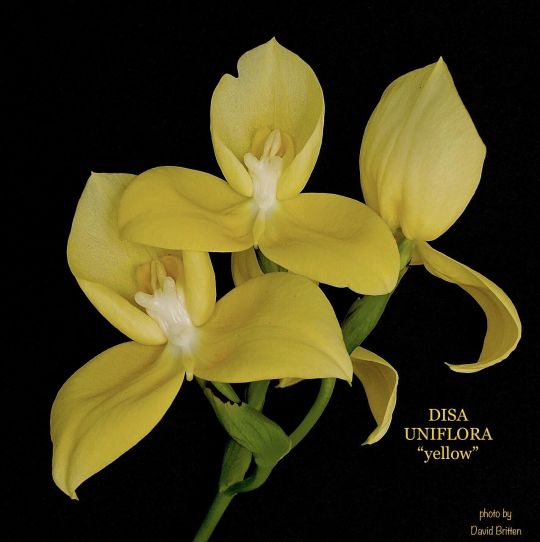
Photo by D. Britten
#disa uniflora#gaygardener#plantblr#plantlife#garden#flowers#african terrestrial orchid#african orchids#near hardy orchids#orchidea#orchids#orchidee#storczyk#orchid garden
16 notes
·
View notes
Text
Hi everyone! I’m making a new Kid Icarus AU because I have no self-control.
I call it:
The Flower Language AU!
It kind of just sprung into my head as I was thinking about all kinds of plants and fun symbolism ideas.
I don’t have a lot of characters for this, but I’ll keep adding on and even draw them!
Pit: Dandelion (Yellow flower). Strong, hardy and can go through all sorts of climates. Stays comfortably on the ground, providing a positive yellow glow and mild yet pleasant aroma. The flower whose beauty so many people underestimate. Withholds a secret desire for freedom from its roots, a wish to be carried by the wind.
Dark Pit: Dandelion (poof). Sacrifices positivity and contentment for a desire for freedom and flight. Doesn't follow any plant's orders, but rather lets the wind carry them until they eventually land and become comfortable enough to settle and blossom with positivity independent from its original roots.
Also it's important to mention that dandelions are considered "starting plants!" Basically when an ecosystem is ravaged or in danger, hardy plants like dandelions are the first to grow there and become the catalyst for more growth.
Palutena: Daphne. A tall shrub with beautiful pink and white flowers that have a scent people describe as ethereal. Thrives in complete sunlight.
Medusa: Creeping bellflower. An invasive plant whose massive roots quickly take over the soil and destroy native plant life in the process. Very hard to kill, but still beautiful, though the bane of many gardeners.
Hades: Barberry. A thorny invasive shrub with vibrant flowers and poisonous red berries that lives deep in the shade. No animal will ever touch this plant as it causes illness and injury, which makes it thrive and take over the landscape.
Viridi: Milkweed. A vibrant pink or orange flower integral to many ecosystems whose seed pods are near explosive in nature. These flowers attract many pollinators and provides a refuge for many specialist bug species.
Pandora: Orchid. A flower that takes on very odd shapes. Orchids can be absolutely beautiful or they can be just plain strange. Most notably the species of orchid she is changes frequently.
8 notes
·
View notes
Note
Top 5 of your own plants AND top 5 dream plants to own
MEGAN, asking me to choose between my plant children is basically criminal at this point, haha. At last count, I have over fifty of them, which is - - y'know, a lot of plants.
It's kind of a wild thing to me, because I had about three at the start of the Melbourne lockdowns, but I found they were just something that helped me feel really connected to the world during that 263 days of isolation. It sparked such a passion for gardening and plantcare that I don't think I had before - just getting to nurture these little slices of potted life and watch them grow and change during a period of my life that felt drawn to a halt was very special, and it's been something I've really gotten to take out of a few very challenging years.
But yes, haha, my plants! Top five in no particular order:
(All of my) Peperomias

I have about six peperomias, a few of them are cuttings of this lady right here, but I have a few other sub-species of her too. Peperomias are great because they're so easy to look after and have such great shapes to them. They also have SUCH fascinating flowers which you can see on one of my other ones here:

The flowers are these long, spindly soft-green stem extensions, and this picture doesn't really do them justice in reality. They're beautiful, hardy plants though, and I love them a lot.
My snake plant

She just keeps growing and she has such height to her, which you can only kinda see in this pic, haha. Anyway, I love her, A+ lady.
My monstera

I've posted about this one before, but I've had her since she was about 10cm tall, so the fact that she's now up to my sternum is bananas. (Yes, I know I need to buy her a new moss stick because the one she has is way too short, and better tuck her aerial roots, but in my defence, she grows very fast).
My crucifix orchid
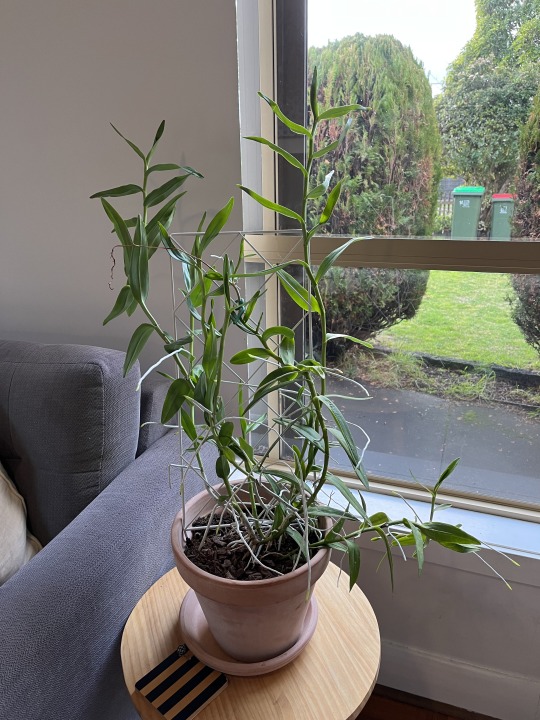
She's not flowering at the moment, but I still think she's a megababe. Plus I think aerial roots are sexy and any home gardener cutting them off is WRONG. Embrace the wild things your plants do! It's their world, we're just living in it, etc etc etc.
My rubber plant with bonus Oreo
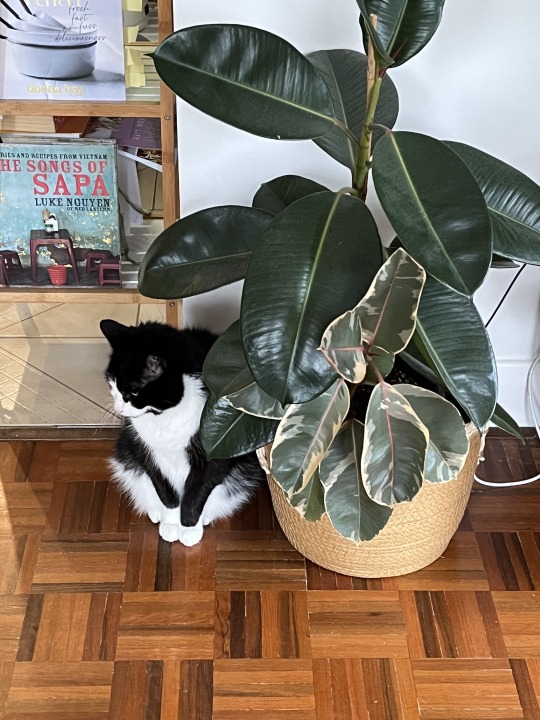
A terrible photo of my rubber plant, but Oreo loves to hide under her leaves, and this is the best photo I have of that, so I hope you get the gist anyway, haha.
Top Five Plants I Want
My dream these days is to have a proper native garden to provide sanctuary to native wildlife, particularly native bats, birds and bees (the three B's!) I'm pretty passionate about decolonising gardens, so even though I love a lot of non-native plants (including virtually all of the ones above), I do think that our gardens should prioritise native flora and try to restore our natural ecosystems.
I rent, which is a big part of why most of my plants are transportable, but I'm hoping soon I might be able to start fostering a native garden.
In that, five of the plants I'd want would be:
Lemon Myrtle
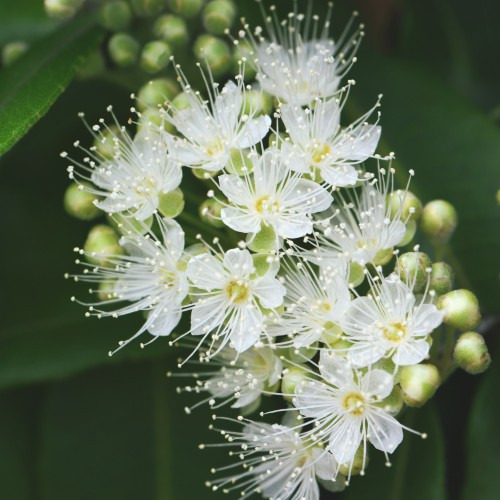
I adore lemon myrtle, both as a plant and as food. It's delicious, beautiful, and just this incredible plant? I love her.
Waratahs

Gorgeous showstoppers!!
Kangaroo Paw
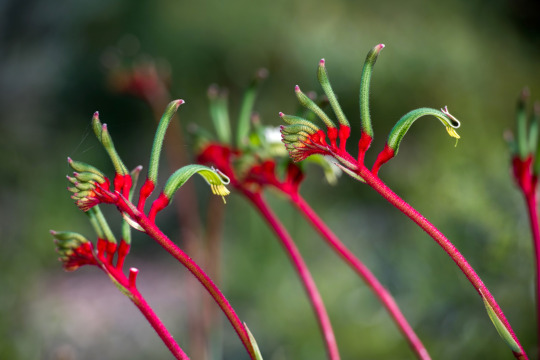
Kangaroo Paw's are probably one of my favourite native plants period, and I did actually have one for a long time, but I'd planted her out into the backyard and the soil at the place I live isn't very good quality, and despite trying to treat it, she died, which is a bummer. I'm hoping I have better luck next time!
Native Bluebell
We have a whole lot of these in the park near my house, and I just think they're really pretty. Tumblr's not letting me upload a pic, but you can see them here.
Wattle

Yeah, okay, she's Australia's national flower, but I am in love with herrrr. Golden Wattle still takes my breath away when I see her in full flower, and the idea of having that at home is magic.
Ask me about my top fives!
#thank yooouuuu#megan knows my kryptonite is talking about plants hahaha#rl#welcome to my ama#top five meme#i do want to have more flowering plants#i have a few#but because most of my plants are indoor plants it doesn't really lend itself to that
5 notes
·
View notes
Text
The 8 best plants to decorate your living room and give it a great look! - Interior decoration
Post has been published on becoration
The 8 best plants to decorate your living room and give it a great look! - Interior decoration
Looking for ways to bring life and color to your living room? One of the best ways to spruce up your space is by adding a few indoor plants. Not only do they look great, but they also offer numerous benefits that make them a great addition to any room.
However, with all the types of plants available, it can be overwhelming to decide which ones are best for your specific space. Nonetheless, it’s a great idea because you are bringing some nature indoors and adding a touch of color to your living room, a place where you spend a lot of time.
There are different sizes, shapes, and colors – plants that are aesthetically pleasing, complementing and decorating any corner very well. Also, you can place them on a small table, or hanging plants to add color and give a fresh look to your living room.
Some of the best plants to decorate your living room
Croton
Croton is a great choice to add color to your living room. Its colorful and variegated leaves can range from yellow to purple and even metallic tones. Plus, croton is easy to care for, making it a great option for those who are not familiar with gardening. Just keep it in a well-lit room or near a bright window.
Rubber Plant
The rubber plant is a great addition to any living room. Its dark, waxy leaves can add a unique touch to your space. Additionally, the rubber plant is incredibly easy to care for, making it a great choice even for novice plant owners. Just make sure to keep it in a well-lit room, as it prefers bright, indirect light.
Snake Plant
The snake plant, also known as mother-in-law’s tongue, is a great choice for those who struggle to keep plants alive. This hardy plant requires very little maintenance, making it a great option for busy homeowners. The snake plant also has air-purifying properties, making it a great choice for those looking to improve the air quality in their home.
Spider Plant
The spider plant is a great choice for decorating the living room. Its long, green leaves and bright white flowers can add a unique touch to your space. Plus, the spider plant is incredibly easy to care for, very eye-catching, and very beautiful to decorate any room. Just make sure to keep it in a well-lit room, as it prefers bright, indirect light.
ZZ Plant
The ZZ Plant, also known as Zanzibar Gem, is a great choice for those who struggle to keep plants alive. This hardy plant requires very little maintenance, making it a great option for busy homeowners. The ZZ Plant also has air-purifying properties, making it a great choice for those looking to improve the air quality in their home.
Fiddle Leaf Fig
The fiddle leaf fig is a great choice for those looking to add a striking element to their living room. Its large, glossy leaves can add a unique touch to your space. Plus, it requires very little maintenance, making it a great choice if you want to decorate with plants and don’t have much knowledge on the subject. Just make sure to keep it in a well-lit room, as it prefers bright, indirect light.
Areca Palm
The areca palm is a great choice for adding a tropical touch to your living room. Its long, feathery fronds can add a unique touch to your space. Just make sure to keep it in a well-lit room, as it prefers bright, indirect light. Being a tropical plant, it needs a temperature above 15°C.
Orchid
The orchid is a great choice to add a touch of elegance to your living room. Its delicate flowers can add a unique touch to your space. Orchids can be a bit more challenging to care for, so be sure to research the proper care instructions for your specific type of orchid.
Final words…
Let’s keep in mind that adding vegetation helps create a calm environment to relieve stress, have a wonderful visual scenery, but it is essential to choose the right ones and place them strategically where they receive light. This point is very important, so they can thrive near a window, for the plants to thrive.
Plants in your living room are a great option to bring life and color to your space. Whether you are looking for something simple and easy or a bit more exotic, the above plants are perfect choices to decorate your living room and give it a very natural look. So go ahead, choose one and start enjoying your new decoration to connect with nature.
Photos: Freepik, Pexels, and Unsplash.
via: Opendeco, decoration news in Spanish
0 notes
Text
Oc-tober Day 14 - Flower(s) - Amathan
"Flowers?" Amathan demands increduously, and Lastadron nods, smiling perhaps a little too gleefully.
"Aye, flowers she said, and as many as we can carry. Dozens of people are being sent out for them, and hundreds are growing them in plots and pots right in the city. Apparantly they're downright essential for a Midsummer wedding."
A burst of song is heard as a nearby tavern door swungs open, despite the early hour, but by now it is no surprise to the pair. Of late the taverns and pubs of the city have been employed more as social hubs and performing stages than their intended use, and a place to gather and rejoice away from the stifling heat of high summer. Amathan more than slightly wishes himself among the throngs of revellers now, as Lastadron drags him cheerfully down through the streets and out the open gate onto Pelennor.
The day is bright and young, the green fields rolling out before them in endless waves and birds singing out the louder as the two tramp further away from the noise by the road.
Though most of the post-war work had already been completed in the nearly three months since their return to the city, there still remained a myriad of other ways they could have assisted this day. They might have gone down to Harlond to help with the repairs, or joined the clearing patrols through Osgiliath, or even tracked down Rodwen to make certain everything was going to plan. Now, though, the day’s schedule seems to consist entirely of picking flowers, courtesy of Lastadron opening his mouth when he shouldn’t have.
Even with a week to go before the ordained day of the wedding, garlands and bouquets adorn Minas Tirith by the hundreds, but always more are needed. Lastadron already has filled his quiver with tall orchids, and Amathan his belt pouch with a crowd of glittering snap-dragons. Their main haul, a wide woven basket, is piled high with colorful flora.
The Sun’s heat, pleasently warm at its rising, sits heavy and hot over the fields, and Amathan can feel himself wilting as they work their way clockwise round the city, though the flowers themselves don’t seem much the worse for it. Lastadron, condemned bearer of the basket, laughs when Amathan voices this thought near the foot of the mountains. There are quite a few other gatherers out on the fields, but flowers have grown incredibly thick and plentiful this year and there is no lack for them.
“And hardy, it seems,” Lastadron says, studying a bright yellow blossom before tucking into the basket. “Not one has broken since dawn.”
Amathan rises from a crouch with an armful of miniature white stars, dumping them atop the mound of flowers carefully. They have been out for hours already and soon they will need to return--- to empty their basket if nothing else.
His scabbard, at least, is clear of flowers, and his hand settles naturally upon it as he surveys the rolling fields of Pelennor. Farms and home, fields and crops, all have been labled high priority with the restoration of the city grounds, and now the fields are returned to a bright and peaceful scene.
Amathan, though, cannot help but see the black and red sky looming overhead through the thin blue veneer when he gazes across it, and the sharp scent of smoke hanging ever on the breeze. Three months it has been, and still at times one can stumble over a rusted orc-helm or a half-buried bone, and the crops grow taller for the blood that soaks the ground.
A light touch upon his arm, and he starts. Lastadron dangles a pair of tiny blue flowers before his face.
“What do you think?” his friend asks, and his smile is slightly wan, “Too small for Merilien?”
“Nay,” he answers, and pushes back soaked hair from his face. It is sweat, not blood, that trickles down his back, and birdsong that echoes through the air. “Doubtless she will find a place to stick them, or an unsatisfactory gap in an arrangement somewhere to suit them.”
Lastadron laughs, and adds them to the pile.
0 notes
Text
Spiky purple flowers

#SPIKY PURPLE FLOWERS FULL#
The plant produces a cluster of orchid-pink flowers. Purpleheart displays attractive narrow pointed purple foliage from spring through frost. Purple Heartīotanical Name: Tradescantia pallida ‘Purpurea’
#SPIKY PURPLE FLOWERS FULL#
This plant spreads quickly and grows up to 1-2 feet tall, under full sun or partial shade. It grows purple or violet flowers with a dark green glossy foliage from early summer till frost. Dwarf Mexican PetuniaĪlso known as a dwarf ruella, this is a low-growing, heat-tolerant perennial. It also attracts hummingbirds and butterflies! The plant prefers full sun and well-drained soil. This gorgeous plant is drought-resistant and attains a height up to 2-3 feet and offers 1-foot long dark purple flower stalks nearly all season. Henry Duelberg Salvia is native to Texas. If you’re a Texan and searching for a purple flower variety for your garden, these Best Purple Flowers in Texas are your best bet! Check out our article on the best types of green flowers here ! When it comes to gardening, the purple flower represents admiration, success, dignity, and pride. The color purple signifies creativity, grandeur, wealth, and independence. You can plant this ground cover near streams, ponds, or in ground with poor drainage.Love the color purple and looking for flowers in similar shade in Texas? Our list of Best Purple Flowers in Texas is going to offer you some stunning specimens! Due to its dense growth, this ground cover plant also holds up under foot traffic and keeps weeds at bay.Ī benefit of growing blue star creeper is that it performs well in damp or wet soil. You can grow this spreading plant for landscape edging, under shrubs, or in shade gardens. The prostrate spreading landscape plant thrives in partial shade.Īlso named Laurentia or swamp isotome, Blue star creeper stays evergreen in USDA zones 6 – 8 and prefers shade to sun. As a low-growing medium-fast creeping plant, blue star creeper grows up to 3” (7.5 cm) high and 24” (60 cm) wide. You can enjoy the light-blue star-shaped flowers in springtime. Creeping Thyme ( Thymus serpyllum )īlue star creeper is a low growing ground cover with pale blue flowers that is good for rock gardens or between paving stonesīlue star creeper is a spreading ground cover evergreen perennial with 5-petaled blue or purple flowers. Let’s look in more detail at the best purple-flowering, evergreen ground cover plants for your garden landscape. Evergreen Ground Cover Plants with Purple Flowers Some hardy varieties of low-growing plants are suitable substitutes for grass that you can walk on. The blooming carpet of foliage and flowers help reduce maintenance in gardens as the low-growing plants reduce the need for mulch. Other benefits of ground cover plants are that they lock in moisture and act as an insulating cover for the soil. What’s more, the best ground cover plants are generally low maintenance. Ground cover plants are also ideal for controlling weeds, preventing soil erosion, or covering bare soil. Usually, these mat-forming plants spread quickly, transforming landscapes into colorful scenes. Ground cover plants are types of plants that are low-growing, spreading, trailing, or creeping plants. Why Plant Ground Cover Plants with Purple Flowers Descriptions and pictures of ground cover plants with purple flowers will help you choose the best varieties for your garden landscape. This article is a complete guide to the best purple ground cover plants for sunny or shaded gardens. You can even grow full-shade purple spreading plants under shrubs or in shaded areas of your yard. Creeping purple flowers can transform pathways, grow in between stepping stones, grow along edges and borders, or in mixed beds. There are endless options to grow ground cover plants if you want to enjoy their purple, lilac, and blue flowers. Other full-sun ground cover plants continue flowering during late spring, through summer and bloom until the fall. You can choose early-flowering creeping plants to enjoy hues of purples and blues in early spring. The best ground cover plants with purple flowers are hardy, evergreen perennials that grow throughout the year. The green leafy foliage and purple flowers will keep your garden looking vibrant, healthy, and full of life in all seasons. Depending on your garden, you can plant purple-flowering ground cover plants for shade or full sun. Varieties of ground cover plants grow as perennials or evergreen spreading plants. Ground cover plants with purple flowers transform garden landscapes with colorful, low-growing, mat-forming creeping plants. Email Pinterest Facebook Twitter Linkedin

0 notes
Text
Made it out to Zilker Botanical Garden on Saturday. The last time we were here was the orchid show in February of 2020. I was very interested to see how things fared after the winter storm, particularly the cycads. Things were actually doing much better than expected! I don't know what, if any, protective measures were taken, but here's the cycads planted in the ground that are still alive. For the record, the storm dropped us down into zone 7b temps; we are 8b and often have mild winters closer to 9a for the most part. Ignoring sago (Cycas revoluta) as it's planted everywhere and has been a mixed bag of survival, but a decent number of plants are recovering now.
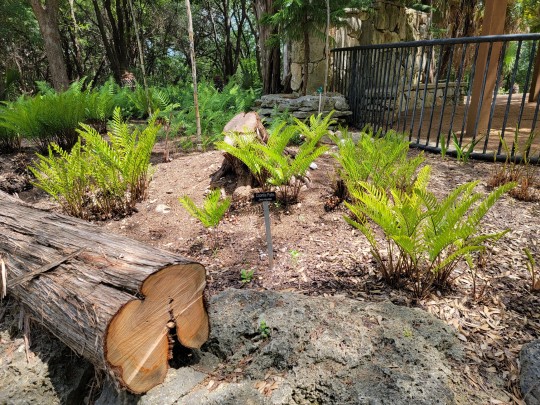

The big winners, without a doubt, were the coontie palms (Zamia integrifolia). Most of these guys are trunkless, which probably helped spare them the worst of the cold. They're popping up like mad.
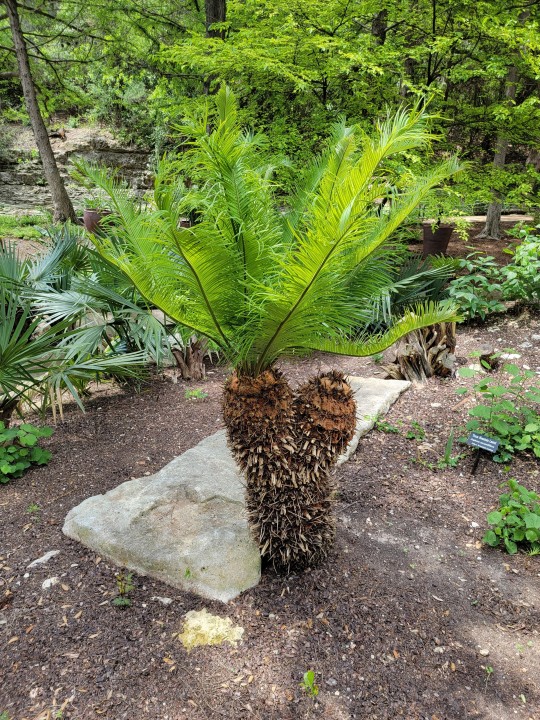

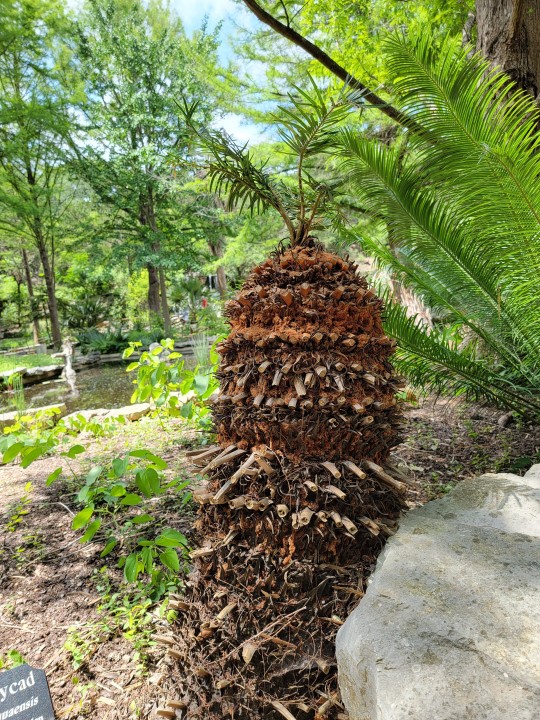
I believe these guys are all Cycas panzhihuaensis. They look amazing, and it does look like lots of people have found them pretty hardy, more so than sago. (Why aren't they in widespread cultivation?) My husband pointed out that the "two-headed" plants seem to have only recovered on one side, at least so far.
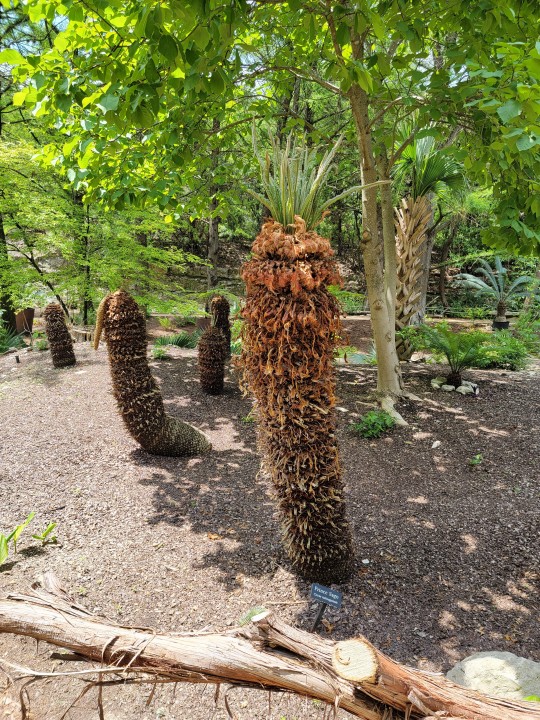
Prince sago (Cycas taitungensis). Mixed results with these guys, but they were the tallest of the surviving cycads.
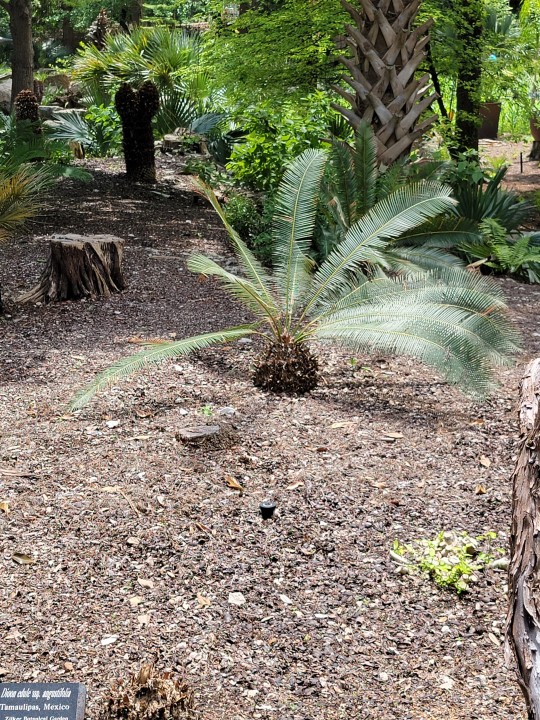
Dioon edule var. angustifolia. Dioon mortality was pretty high, but some more sheltered individuals made it.
I did not get a good picture of it, but a bamboo cycad (Ceratozamia hildae) was leafing out from its base.
This part of the gardens also gave a good snapshot of true palm mortality. Among survivors:
All sabals (S. minor, mexicana, x brazoriensis, uresana, x Riverside)
Queen palm (Syagrus romanzoffiana, nowhere near mature size though)
Needle palm (Rhapidophyllum hystrix)
European fan palm (Chamaerops humilis)
Windmill palm (Trachycarpus fortunei)
Only the queen palm was a surprise, as the others are well known for hardiness.
I ignored anything Washingtonia-esque because as a class they fared terribly (causing a massive cleanup/environmental problem), but I still can't distinguish the species reliably. A palm forum reports true W. filifera fared far better than robusta, but as the latter has eclipsed the former in popularity, the damage is substantial. We'll see if this prompts any shifts in the nursery trade.
15 notes
·
View notes
Text
Hello hello hello! A week has passed and I am back from my mini break. I am going to indulge in a little travel report here, so those of you who have no interest in sitting through someone else’s holiday pictures – no offense taken, I totally understand! – please just scroll down to where you see the header for the round-up. All your tumblr Armitage needs will be satisfied down there 😉.
Tbh, it was lovely to leave the confines of my home town and finally venture out a little bit farther afield. In fact, it only occurred to me as we were on the road, that I hadn’t left Dublin at all since mid-January 😱. Ireland is not really that big – it reaches about 500 km (300m) from top to bottom – but the terrain here is characterised by rocks and hills, which makes for small, windy roads, especially as the infrastructure does not need to be as car-friendly as in other, more populated countries in the world. So don’t be surprised if you see the estimated travel time in the map below.

Yes, it takes more than 4 hours to travel 287km (178m) in Ireland. 😁 If you look really closely at the map you will actually notice a black jagged line running through the land. That is the border between the Republic of Ireland and Northern Ireland, which is part of the United Kingdom. Our route this time took us the Northern Irish way, crossing into NI near Belturbet and then exiting again via Pettigo. The border is still “green”, i.e. there is no visible sign that you have actually moved from one jurisdiction to another. (I can usually only tell by the difference in road surface 😂 and the fact that the speed signs are suddenly in miles/h and not in kilometer/h any more. It’ll be interesting to see the Brexit regulation work out the issue of the United Kingdom’s *only* land border while keeping both EU customs rules as well as inner-Irish peace…) This is the shortest way of getting up from Dublin in the centre of the East coast, into the Northwestern corner of Ireland, which is part of the Republic and called County Donegal.
Our journey took us even longer than the estimated 4 hours, but then we also had to switch drivers in order to relieve my mother-in-law (77) and take a lunch break. We eventually arrived in Dunfanaghy in the late afternoon where my father-in-law had specifically booked rooms with a view in the plush Arnold’s Hotel. At first I was a bit taken aback at the layer of dust in our otherwise lovely room but then I realised that it meant the room had not been used in months and we were the first occupants since reopening the day prior, i.e. no lingering viruses there… From our luxurious king-size bed we had views out to the beach. (Click all images to enlarge!)
View from the bed
Village idyll
Busy despite the Covid crisis
Dunfanaghy beach at low tide
I have to say I was a bit skeptical as regards the attitude of the holiday makers towards keeping safe from the virus, though. Dunfanaghy was packed to the gills with tourists, particularly from Northern Ireland. (The weekend actually coincided with the traditional, Protestant celebrations of the Battle of the Boyne on the 12th of July every year. This is a significant date in NI, marking the victory of Protestant king William III over Catholic king James II, celebrated with drums, huge bonfires and marches by the Orange Order. It continues to be a controversial tradition within NI, with (some) Catholics offended by the celebration of this victory, while (some) Protestants insist on their right to express their traditions.) As part of the UK, NI has had a different approach to the Covid crisis than the Republic, and tbh I was not really that impressed with the general lack of social distancing displayed last week. (It goes without saying that it was *not only* NI people who were far too close for my comfort; there obviously were also plenty of Irish holiday makers there, too.) Within the hotel, there were hand-sanitisers at all exits and corridors, so it was easy to keep hands clean. In the restaurant, the staff wore PPE masks and the guests were seated well apart as fewer tables than normal were set up. So I felt relatively safe in there. But I hardly saw any face masks worn in the village, people were congregating in big groups outside pubs and shops, and it felt as if there were no covid restrictions at all. All that made me very angry. On our walks, particularly in the very busy Glenveagh National Park, people would not keep distance even though the paths were more than 2 meters wide, and on the parking lot, cars parked directly side-by-side. But then again, at least we were outside, and Glenveagh is an absolutely stunning place.

Glenveagh
Glenveagh Castle
In the kitchen garden of Glenveagh
Bag End?
Entrance to the kitchen garden
Wild life very close by
I have been to Glenveagh a good few times before. It’s a stunning valley with a 19th century hunting lodge castle at the centre. There is a formal garden through which you enter the castle grounds, but what I had not see until now was the amazing kitchen garden. The little gardener’s cottage under the large tree somehow reminded me of Bag End.
The best thing, of course, is the beaches and dunes and the mighty North Atlantic.

Tramore Strand
Horn Head
View of Tramore from the dunes
Horn Head from Dunfanaghy
I was thinking of Squirrel/Radagast who had commented about wild flowers before I left for the North, and I took a good few photos of flowers.
Native Irish orchid
Calla lily – associated with the Irish struggle for freedom
The weather was – Irish. We had two days that were predominantly dry, with only a little bit of drizzle here and there. Only on our last day the weather really turned against us, which was annoying as we had planned to go walking with my in-laws a bit. But well, a bit of wet doesn’t deter my hardy in-laws. There is no bad weather – only inappropriate clothing. So we trudged off on a two-hour walk in the Ards Forest. I think I was the only who got drenched to the skin. Yep, even after 20 years I still haven’t learnt… or bought the right equipment.

Typical family picnic. In the rain. Sharing 1 bottle of Guinness, 2 apples and 2 sandwiches. No lie.
However, we did also get a bit of sunset in, and so the trip’s best memory is this – a sundowner from Horn Head with the ragged shape of Tory Island in the background.
So, that was my summer holiday 2020. Four nights away with family. It was actually really lovely, especially as my f-i-l is now getting really old. This may have been his last trip up to Donegal. It was lovely to spend time with him and my m-i-l who are still very active and who are interesting to chat to. I was especially delighted that Little Miss Guylty came along, too – not just for myself but also for the grandparents for whom her presence is particularly special. And I had four nights of sound sleep that really recharged my batteries. So much so that I can now jump energetically into this week’s tumblr round-up:

Badtennantwolf has put together a set of icons. I am including the set here for the first four pictures of RA at SDCC in 2015 as we recently had a chat about that occasion (and the famous dragon beanie throw) elsewhere
Richardarmitagefanpage reminds us of a Hobbit Extended Editions rewatch organised by One Ring Net for 21 July
Some dramatic Guy of Gisborne gifs, season 3, by riepu10
LOL. Including this mainly for the spot-on caption by thewarriorandtheking
*sniggers* Mezzmerizedbyrichard has come to the aid of many hot and bothered Mr Thornton admirers…
I have always been somewhat intrigued by that pock mark on Richard’s arm. Maybe he had it removed or something, because I also remember pictures from around the same time where he sported a blue plaster on his bicep. Picture posted by hobbitoferebor
Goodness me. 13 years ago. Yes, he looks a good bit younger. And full-on Gisborne-sideburns. Gifs by riepu10
Eyelash porn courtesy by mezzmerizedbyrichard
Ignore the wig and enjoy the nose! Richard as Claude Monet, giffed by mezzmerizedbyrichard
Lehnsharks’ Thorin drawings
BTS footage of Richard as Thorin was few and far between, so here are a few precious scenes, giffed by riepu10
Daniel Miller/Trevor Price looking ominous… Gifs by riepu10
One of nfcomics’ What A Guy Wants… interesting metaphor…
There we go. Sorry for the whole long holiday crap. I can faithfully promise that that is it for this year *sardonic laugh*.
However, before I go and more importantly, just a quick reminder:
It’ll be August soon and that means… RA birthday auction time!!! Donations of items have been coming in and it is high time for me to start organising and promoting, soon. Watch this space for more info!
Have a lovely weekend,
Sonja ❤️
2020 Armitage Weekly Round-up #28 Hello hello hello! A week has passed and I am back from my mini break. I am going to indulge in a little travel report here, so those of you who have no interest in sitting through someone else's holiday pictures - no offense taken, I totally understand!
#Daniel Miller#Guy of Gisborne#John Thornton#Richard Armitage#Thorin Oakenshield#Weekly tumblr Round-up
7 notes
·
View notes
Text

Autumn flowwrin Pleione albiflora x praecox
#autumn flowering pleiones#gaygardener#pleione orchids#pleione orchid#pleiones#near hardy orchid#orchidea#orchidee#orchid garden#storczyk
12 notes
·
View notes
Photo
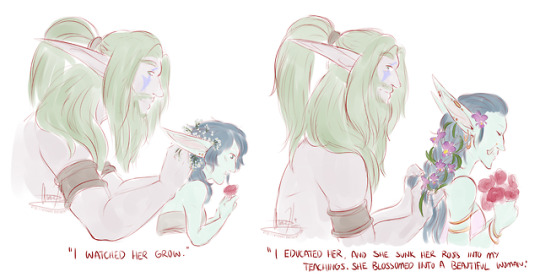

This is based on the whole concept of how powerful our characters in WoW are slowly getting and the fact that I see Malfurion as growing complacent with his power, and therefore stopping the “learning” process.
Also Amita can turn into a dragon so. She like. Wins. //BRICKED
Flowers: baby’s breath (meaning innocence), orchids (meaning maturity or mature charm), and atom hardy gladiolus (meaning strength of character).
In Fieschada, Malfurion likes to weave flowers into Amita’s hair as he braids it. I thought it would be rather significant if the last shot had the braid coming undone, to further push the narrative that Amita has surpassed him (or outgrown him, as it were, in that there was nothing more he could teach her. I’M SORRY I’M RAMBLING AT THIS POINT AND I’LL STOP, LOR’THEMAR IS COMING SOON TO A BLOG / TWITTER NEAR YOU).
#WoW#World of Warcraft#Amita Dakini#Malfurion Stormrage#Also our characters gain the 'big' titles like#Archmage#Archdruid#Huntmaster#etcetc#Which to ME implies that by the point of Legion?#Most of our characters have surpassed their original teachers#Ofc this doesn't always have to be the case#But with Amita it is#That doesn't mean she is ALLPOWERFUL ALLMIGHTY ALLGREAT nono pls no#She has simply surpassed Malfurion#I ALSO KINDA FAILED BECAUSE#AS YOU CAN SEE HE HAS NO ANTLERS#AND AS YOU CAN ALSO SEE I DIDN'T DO THE BEST JOB#AT SHOWING THAT HE WAS SLOWLY AGING HIMSELF HAHAHA
88 notes
·
View notes
Text
July Special Offers
• Herbs were £1.89 now 99p each ten for £6.99
• New Guinea usually £4.99 now £3.99 three for £10
• Lily on the wall were £6.99 now £1.99 three for £5
• Dahlia were £5.99 now £1.99 three for £5
• Extra-large evergreen Jasmin, usually £69 this month £40
• Round and Square Bedding and basket plants were £1.89/£1.50 each, now 99p each, Ten for £6.99
• Rhododendron were £19.99 now £9.99
• Mangave were £14.99 now £9.99
• Summer Hanging baskets now £16.99 each two for £25 (excludes red training geraniums)
• Orchids were £12.99 now £6.99
• Roses - buy two or more for 20% discount. Five or more 50%
• Six pack sweet pea free to good homes.
• Veg Round pot veg plants, 20 pack and six pack were £5.99/£1.89/1.50 now 49p each
• Spent bulbs in bed 6 now 99p a pot
• Hardy shrubs on bed 1 - 50% off
• Conifers, fruit and trees in bed 9 and 10 now 80% off original price
• Used large commercial propagation/seed trays 99p (bed 1)
• Wrought iron baskets and planters now 50% off (near the top greenhouse)
• Don’t forget our bargain bench outside too
0 notes
Text
Global Cactus Traffickers Are Cleaning Out the Deserts
A recent raid in Italy involving rare Chilean species highlights the growing scale of a black market in the thorny plants.
— By Rachel Nuwer | May 20, 2021 | The New York Times
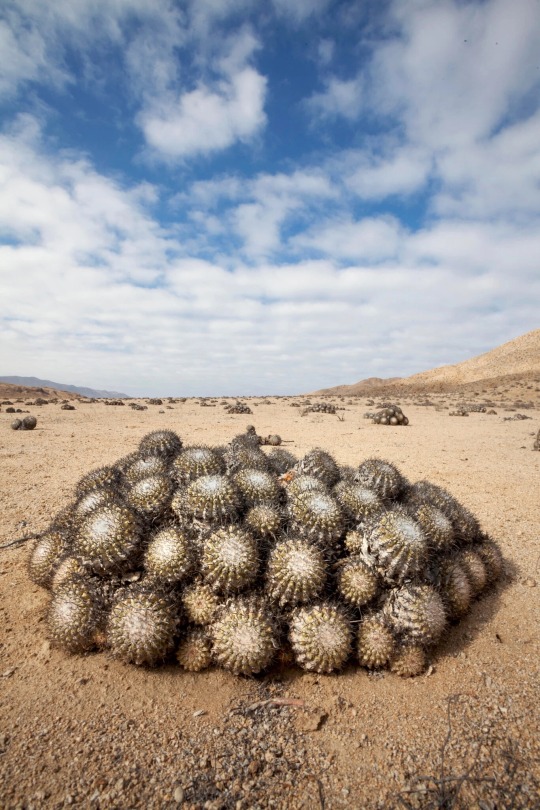
Copiapoa cinerascens, a cactus, in Pan de Azúcar National Park in the Atacama Desert of Chile. Credit...Gretchen Mattison/Alamy
Andrea Cattabriga has seen a lot of cactuses where they didn’t belong. But he’d never seen anything like Operation Atacama, a bust carried out last year in Italy. A cactus expert and president of the Association for Biodiversity and Conservation, Mr. Cattabriga often helps the police identify the odd specimen seized from tourists or intercepted in the post.
This time, however, Mr. Cattabriga was confronted by a stunning display: more than 1,000 of some of the world’s rarest cactuses, valued at over $1.2 million on the black market.
Almost all of the protected plants had come from Chile, which does not legally export them, and some were well over a century old. The operation — which occurred in February 2020, but is being made public now because of the cactuses’ recent return to Chile — was most likely the biggest international cactus seizure in nearly three decades. It also highlights how much money traffickers may be earning from the trade.
Seeing the collected cactuses brought a profound sadness to Mr. Cattabriga.
“Here is an organism that has evolved over millions of years to be able to survive in the harshest conditions you can find on the planet, but that finishes its life in this way — just as an object to be sold,” he said.
As with the market for tiger bones, ivory, pangolin scales and rhino horn, a flourishing illegal global trade exists for plants. “Just about every plant you can probably think of is trafficked in some way,” said Eric Jumper, a special agent with the Fish and Wildlife Service. Cactuses and other succulents are among the most sought after, along with orchids and, increasingly, carnivorous species.
Trafficking can take a serious toll. Over 30 percent of the world’s nearly 1,500 cactus species are threatened with extinction. Unscrupulous collection is the primary driver of that decline, affecting almost half of imperiled species. Yet this realm of illegal trade is typically overlooked, a prime example of “plant blindness,” or the human tendency to broadly ignore this important branch on the tree of life.
“The basic functioning of the planet would effectively grind to a halt without plants, but people care more about animals,” said Jared Margulies, a geographer at the University of Alabama who studies plant trafficking. “A lot of plant species are not receiving the amount of attention they would be if they had eyes and faces.”
Yet the size of Operation Atacama could be a notable exception. It is also the largest known example of cactuses stolen from the wild being repatriated for reintroduction into their native habitat.
Experts also hope the case can be a turning point for how countries, collectors, conservationists and the industry deal with the thorny issue of international cactus trafficking.
“Society as a whole can no longer continue to have a naïve view of this problem,” said Pablo Guerrero, a botanist at the University of Concepción in Chile.
Passion For Rarity
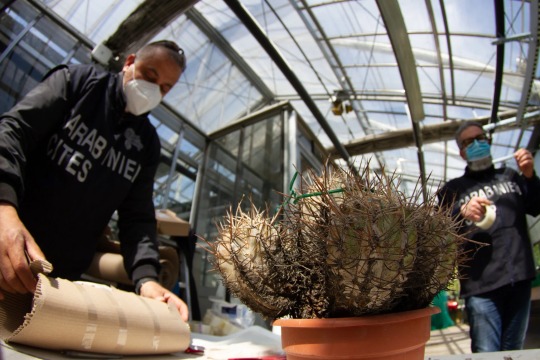
Italian investigators with Operation Atacama prepared a specimen of Copiapoa solaris for shipment back to Chile from a greenhouse in Milan, Italy. Credit...Andrea Cattabriga
Cactuses and other succulents are hot business today. They have become the darlings of social media, promoted by indoor plant influencers for their outlandish looks and minimal care requirements. The pandemic only increased their popularity, with shops struggling to keep some species in stock.
The average hipster’s cactus collection will include only common species propagated in nurseries. But for some specialist collectors — who tend to be middle-aged or older men — the hobby is much more serious.
“A lot of what drives the interest and passion for these plants is their uniqueness and rarity,” said Bárbara Goettsch, co-chair of the Cactus and Succulent Plant Specialist Group at the International Union for Conservation of Nature.
Many cactus species are highly localized, found, for example, only on certain steep limestone cliffs in Mexico, or a single sandy patch of less than one square mile on Peru’s coast. They also tend to be extremely slow-growing. Larger specimens, which are more highly sought after, can be decades or even hundreds of years old. These features make cactuses particularly sensitive to over-harvesting, but also particularly attractive to collectors interested in exclusivity.
Purchasing rare species legally, however, can be difficult to impossible. All cactuses and many other types of succulents require permits to be traded internationally, if they can be legally traded at all. Most countries also prohibit collection of some or all of these species from the wild, including the United States.
“For all cactuses, you cannot collect them off public land, period,” Mr. Jumper said. “Catching people in the field actually collecting cactuses takes quite a bit of luck, though, because they collect in some vast areas.”
Once cactuses are poached from the wild, illicit trade often happens in the open. High-end plant shops in Japan display protected, wild-harvested species, while sellers around the world advertise them on eBay, Instagram, Etsy and Facebook. Online ads are often accompanied by disclaimers that the cactuses do not come with necessary permits for legal trade, and poachers sometimes livestream videos from the field, asking customers which plants they want. Traffickers are rarely caught or prosecuted. While American, British, European and Japanese collectors have traditionally driven the illegal trade, more recently, interest has also spread to China, Korea and Thailand.
Although no estimates exist for the scope of the illegal cactus trade, many experts believe it is increasing. “It was a much smaller issue 20 years ago, but now, it is major,” said Jeff Pavlat, president of the Cactus and Succulent Society of America. “Entire populations are being stripped.”
A Poacher’s Playbook
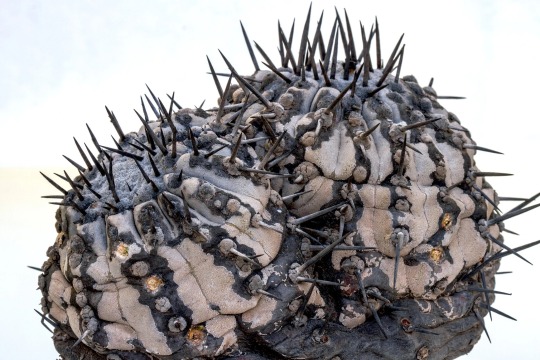
Copiapoa Cinerea. Credit...Andrea Cattabriga
In February 2020, the Italian police, responding to a tip, visited the home of Andrea Piombetti, a well-known cactus collector and seller in Senigallia, a town on the Adriatic coast. In a makeshift greenhouse, officers discovered around 1,000 protected Chilean Copiapoa and Eriosyce species, ranging from the size of a baseball to a beach ball. Police officers seized the plants, along with Mr. Piombetti’s cellphone and passport.
It was not the first time Mr. Piombetti, who did not respond to interview requests, and who is now awaiting trial, had been accused of cactus trafficking. The police also seized a shipment of 600 Chilean cactuses from him in 2013. But the case was never prosecuted because of bureaucratic delays, and the statute of limitations passed.
“Many environmental crimes in Italy have this problem — they can’t be punished after four or five years,” said Lt. Col. Simone Cecchini, chief of the wildlife division of the local police department, who led the 2013 and 2020 investigations. “This time, our prosecutor said we’ll try to be very fast, because he wants to avoid what happened in 2013.”
Mr. Piombetti has not yet entered a plea in court.
Mr. Cattabriga and other experts carried out a number of analytical tests to confirm that the plants had not been homegrown, but instead were collected from the wild in Chile’s Atacama Desert. Mr. Cecchini and his colleagues found that Mr. Piombetti had made seven trips to Chile, most recently in December 2019, where they say he poached the cactuses in the Atacama Desert, near Pan de Azúcar National Park.
After collecting the cactuses, Mr. Cecchini’s investigation revealed that Mr. Piombetti allegedly mailed the plants to addresses in Greece and Romania, where international customs are more lax than in Italy. Because of their hardiness, cactuses can survive long journeys by post without soil, water or light.
Mr. Cecchini found many records of illegal cactus sales in Mr. Piombetti’s phone, including receipts from a Japanese company that seemed to place large monthly orders. Based on the prices quoted by text, the police calculated that the seized cactuses were worth over one million euros.
“We need bigger penalties in Italy for this type of environmental crime,” Mr. Cecchini said.
A First-of-its-kind Homecoming

A specimen of Capiapoa conglomerata recovered by Operation Atacama. Credit...Andrea Cattabriga
After the seizure, Mr. Cattabriga arranged for the plants, many of which were in very poor health, to be transferred to the Città Studi Botanical Garden of Milan for temporary care. As the investigation progressed, the question of what to do with them became more urgent.
Cactuses confiscated by the Italian authorities are normally destroyed or, if they are rare species, sent to botanical gardens. But with Operation Atacama, “it was very different,” Mr. Cattabriga said. The number of cactuses was so large, and some were critically endangered species found in areas of Chile spanning just a few square miles with very specialized needs. Keeping the cactuses at the garden was a likely death sentence.
At first, there was discussion of sending the plants to other botanical gardens in Italy and broader Europe. But Mr. Cattabriga, Mr. Cecchini and Dr. Guerrero were adamant they be returned to Chile for both conservation and symbolic purposes.
Working with Dr. Goettsch and several others, they spent much of 2020 navigating Italian, Chilean and international bureaucracy to secure permission to send the plants home. “It’s the first time this has happened, so no one was really clear on how to do this,” Dr. Guerrero said.
The authorities finally agreed to the transfer in late 2020. But neither Chile nor Italy would pay the approximately $3,600 shipping cost.
Dr. Goettsch managed to secure about three-quarters of the funds from the International Union for Conservation of Nature, and the botanical garden in Milan pitched in as well. The rest was provided by Liz Vayda, owner of B. Willow, a plant shop in Baltimore that regularly donates to environmental groups.
Finally, in late April, 844 cactuses made the return journey to Chile. Around 100 others had died, and 84 stayed in Milan for study.
Mr. Cattabriga has been making daily video calls to try to ensure the plants are being properly cared for while they are in quarantine. According to Bernardo Martínez Aguilera, head of the forest inspection department at Chile’s National Forest Corporation, the final goal “is that the majority of these individuals return to their natural environment, which they never should have left.”
Carrots and Sticks

Cacti of the Copiapoa genus in Pan de Azúcar National Park. Credit...Erlantz Pérez Rodriguez/Alamy
Operation Atacama is by far the biggest bust in recent history, but there are other signs that law enforcement is beginning to take note of cactuses. Six men were sentenced to a number of penalties after recent federal convictions involving a cactus trafficking ring that poached thousands of living rocks in southwest Texas for smuggling to Europe and Asia. Additional cactus-related prosecutions have taken place in California and Arizona.
But while stronger law enforcement is welcome, a variety of experts believe prohibition, on its own, will not stop trafficking. Instead, they favor meeting demand through sustainably managed collection of seeds or cuttings of wild plants, which could be used for artificial propagation by certified greenhouses.
Sales of these legally sourced plants could help offset illegal trade. Preferably, the proceeds would go directly to communities living alongside the species, the experts say, creating incentives to protect them. The cactus and succulent trade is “big business, but the majority of that money is not centered in countries of origin,” Dr. Margulies said. “I think there should be a push to engage in this more from a social justice lens.”
Many countries’ domestic legislation prohibits these types of activities, however, as do strict international trade laws and bureaucracy. The result, Mr. Cattabriga said, is a system that “discourages the reproduction of rare plants in captivity, and has the side effect of exacerbating the illicit trade.”
Dr. Guerrero hopes that Operation Atacama will ignite discussions of how to reform legislation to make it more amenable to solutions.
In the meantime, some plant enthusiasts are going out of their way to change cactus collecting culture. Ms. Vayda at B. Willow, for example, is in conversation with the International Union for Conservation of Nature about potentially establishing houseplant industry standards for certifying that greenhouses use legally sourced plants, similar to organic or fair-trade food labels. “Right now, I have to specifically ask a grower, ‘Where do your plants from?’” she said.
The Cactus and Succulent Society of America is trying to steer members away from the temptation of poached plants through educational talks, articles it publishes and other means. The society also banned growers from entering specimens into specialty shows and competitions that members would have no way of legally acquiring today.
“You can’t have a Copiapoa collected in Chile in the 1970s get the ribbon, and then tell members, ‘No, you can’t have that plant, you have to start from seed and in 200 years you can have it,’” Mr. Pavlat said. “We have to reset what people’s goals and expectations are.”
0 notes
Text
20 Amazing Houseplants for Your New Home in Scottsdale
When you buy a new home for sale in Scottsdale, one of the first things you’ll want to do is make it feel like your own – and the best way to do that is to bring a little of the outdoors inside. In addition to giving off natural mood-boosting benefits, having houseplants helps clean the air and can add some serious decorative style to your space. Check out these 20 amazing houseplants for your new home in Scottsdale to see which ones speak to you.
20 Amazing Houseplants for Your New Home in Scottsdale
These are some of the most forgiving – and attractive – houseplants you can add to your space.
Chinese Evergreen
Asparagus Fern
Guiana Chestnut
Chinese Money Plant
Yucca
African Violet
Spider Plant
Peace Lily
Aloe
Dragon Tree
Calathea
Rubber Plant
Bromeliad
Jade Plant
Phalaeonopsis Orchid
Philodendron
Christmas Cactus
Mother-in-Law’s Tongue
Cast-Iron Plant
ZZ Plant
Here’s a closer look at each – and what you need to do to care for them.
Chinese Evergreen
Chinese Evergreen can dry out quickly, but it’s really forgiving if you over-water. It comes in a wide range of varieties that each look a bit different from the last, which means it’s an excellent houseplant.
Asparagus Fern
The Asparagus fern is hardy, and it can adapt to thrive in bright or dim light. As long as you keep its soil moist, this fern will be an excellent addition to your house.
Guiana Chestnut
Guiana Chestnut is often called a “money tree,” but you won’t get any greenbacks from it. Instead, you’ll enjoy its braided trunk as you place it in a spot that gets plenty of bright, indirect light (and water it often, because these grow in swamps).
Chinese Money Plant
Like the money tree, this one is barren when it comes to cold, hard cash… but the Chinese Money Plant is also called the “pancake plant” (no dice there, either) and it prefers the shade and a good, weekly watering.
Yucca
We have plenty of yucca outdoors, but it makes a great indoor plant, too. Yucca doesn’t need much water, but what it does need is plenty of sun and a deep container so it doesn’t tip over when it grows tall.
African Violet
African violet is a flowering bloom that will surprise you with pops of color several times during the year. It likes bright but indirect sunlight and moist soil with good drainage (and piña coladas, and taking walks in the rain).
Spider Plant
Fast-growing spider plants thrive in bright light with a once-a-week watering, though you may have to spritz its leaves a couple times a week thanks to our dry climate. These green-and-white plants are perfect for corner tables near windows.
Peace Lily
Peace lily plants are easy to care for and can really tolerate over-watering. If the leaves start to turn brown, scale back your trips to the sink – but other than that, they’re fine in nearly any light conditions and will treat you to beautiful white flowers when they’re healthy.
Aloe
Spiky and fun to look at, aloe plants are a handy household item – you can break the stems for a soothing balm after a sunburn. These plants do well in indirect light and with weekly or bi-weekly watering.
Dragon Tree
The dragon tree (don’t get your hopes up – we let you down on the Chinese Money Plant and the Money Tree, remember?) loves low light conditions, so it does well in dim corners. Just be careful with this one; it’s toxic to household pets.
Calathea
Calathea produces gorgeous pink, purple, green and red leaves. It doesn’t like a lot of direct sunlight or too much water, but it’s a sturdy little plant that requires minimal care.
Rubber Plant
Ornamental rubber plants have wide, flat leaves with a waxy shine. You’ll have to prune yours, but keep it in indirect light and water it once a week and it’ll do exceptionally well inside your home.
Bromeliad
Tough and long-lasting, bromeliads love household temperatures – they do best at around 70 degrees. You’ll want to protect it from cold drafts and water it weekly so it can stay healthy all year.
Jade Plant
Jade plants are succulents, so they’re easy for people without green thumbs. If you forget to water it, it’ll simply go dormant – but if you over-water it, you could cause root rot.
Phalaeonopsis Orchid
The phalaeonopsis orchid is a low-light, beautifully flowering plant – but you’ll have to make sure to water it at least once a week and spritz it down in between waterings. They normally grow in humid areas, so they need a little extra TLC in Arizona.
Philodendron
There are hundreds of varieties of philodendron, each a little different from its cousins – but they do like to be on the dry side, which means too much water will send it downhill. They like low light conditions, too, so they’re perfect for cozy rooms without too much sunlight pouring in.
Christmas Cactus
Christmas cactus (also called Thanksgiving cactus in some botany circles) produce white, pink, purple or red flowers. They don’t need tons of water, so they’re really easy to care for – even if you occasionally forget that they’re there.
Mother-in-Law’s Tongue
Mother-in-Law’s tongue isn’t sharp, but the leaves are tall, stiff and vertical – and it’s sometimes called the “snake plant.” They can last up to a month without water.
Cast-Iron Plant
The cast-iron plant is as sturdy as you’d expect it to be. It does just fine in low light, poor soil and questionable watering schedules. It can also thrive in a wide range of temperatures, and its leaves can grow up to 2 feet high.
ZZ Plant
This plant is Tops. Seriously – it’s practically indestructible. It can survive low light, low humidity and drought, which means it’s perfect for keeping indoors.
Are You Buying a Home in Scottsdale?
Call us now at 480-351-5359 so we can start searching for your dream home. While you’re here, you can explore all our Scottsdale real estate listings or look in specific communities:
Desert Highlands homes for sale
Hidden Hills homes for sale
Legend Trail homes for sale
Pinnacle Peak homes for sale
Sincuidados homes for sale
South Scottsdale homes for sale
SunRidge Canyon homes for sale
Winfield homes for sale
If you’re selling a luxury home in Scottsdale, we can help. You can use our home value calculator to get a ballpark idea on what your home may be worth – and you can call us at 480-351-5359 to talk to a REALTOR® about how we can market your home to all the right buyers.
Don Matheson
REALTOR® | Founder
The Matheson Team
RE/MAX Fine Properties
21000 N. Pima Rd., #100, Scottsdale, AZ 85255
480-351-5359
[email protected]
Address & Phone
Don Matheson
21000 N Pima Rd #100
Scottsdale, AZ 85255
602-694-3200
Map Location
Contact By Email
Message
Name*
Email*
Phone
Message
Send
Real Estate IDX Powered by iHomefinder
Explore Homes for Sale in North Scottsdale Now
$5,285,000 (Pending)
6508 E BAR Z Lane
Paradise Valley, AZ 85253
5
Beds
5 | 1
Baths
7,479
SqFt
#5879501 | Single Family Home
Courtesy of RE/MAX Fine Properties

$3,300,000 (Under Contract-Backups)
9820 E THOMPSON PEAK Parkway #642
Scottsdale, AZ 85255
4
Beds
6
Baths
5,434
SqFt
#6023492 | Single Family Home
Courtesy of RE/MAX Fine Properties

$2,500,000
19946 N 103RD Street #1102
Scottsdale, AZ 85255
4
Beds
4 | 1
Baths
6,964
SqFt
#5949868 | Single Family Home
Courtesy of RE/MAX Fine Properties

$2,500,000
18946 N 97TH Place
Scottsdale, AZ 85255
4
Beds
6
Baths
5,469
SqFt
#6034721 | Single Family Home
Courtesy of RE/MAX Fine Properties

$2,300,000
9820 E THOMPSON PEAK Parkway #604
Scottsdale, AZ 85255
3
Beds
4 | 1
Baths
4,195
SqFt
#6031611 | Single Family Home
Courtesy of RE/MAX Fine Properties

$1,100,000 (Under Contract-Backups)
23227 N 94TH Place
Scottsdale, AZ 85255
4
Beds
4 | 1
Baths
4,104
SqFt
#6031727 | Single Family Home
Courtesy of RE/MAX Fine Properties

$1,075,000
13429 E CANNON Drive
Scottsdale, AZ 85259
4
Beds
3 | 1
Baths
3,793
SqFt
#6023720 | Single Family Home
Courtesy of RE/MAX Fine Properties

$875,000
7868 E STAGECOACH PASS Road
Carefree, AZ 85377
6
Beds
4 | 1
Baths
4,479
SqFt
#6034180 | Single Family Home
Courtesy of RE/MAX Fine Properties

$815,000
19 E WOODWARD Drive
Phoenix, AZ 85004
0.28
Lot Acres
#5903494 | Lots / Land
Courtesy of RE/MAX Fine Properties

$800,000
26261 N PASO Trail
Scottsdale, AZ 85255
3
Beds
2 | 1
Baths
2,780
SqFt
#6020746 | Single Family Home
Courtesy of RE/MAX Fine Properties

$798,000
20498 N 98TH Place
Scottsdale, AZ 85255
3
Beds
2
Baths
2,289
SqFt
#6021533 | Single Family Home
Courtesy of RE/MAX Fine Properties

$439,000
8556 E PECOS Lane
Scottsdale, AZ 85250
3
Beds
2
Baths
1,590
SqFt
#6013774 | Single Family Home
Courtesy of RE/MAX Fine Properties

$399,000
18911 E Quartz Way
Rio Verde, AZ 85263
2
Beds
2 | 1
Baths
2,446
SqFt
#6021725 | Condo
Courtesy of RE/MAX Fine Properties

$199,900 (Pending)
16357 E ARROW Drive #105
Fountain Hills, AZ 85268
2
Beds
2
Baths
969
SqFt
#6008887 | Condo
Courtesy of RE/MAX Fine Properties

$49,000
20400 W TOPAZ Boulevard
Goodyear, AZ 85338
4.36
Lot Acres
#5813681 | Lots / Land
Courtesy of RE/MAX Fine Properties

The post 20 Amazing Houseplants for Your New Home in Scottsdale appeared first on Scottsdale Real Estate.
0 notes
Text
If I could live in a lush tropical indoor jungle I would, oh how I would!
Lucky we live in the middle of an outdoor tropical forest! But this is our first Winter in our home and it has been cold, rainy, windy and rough. We can’t go outside and frolic amongst the trees like we want too, therefore we have to be content watching the forest through the icy winter condensation on our windows.
Whilst waiting for winter to be over and the ground to dry out I decided there was a need to introduce some ‘indoors nature’ by way of house pets plants.
I am not great with houseplants as I find them to be quite needy and temperamental. It could be the type of plant I select or it’s more likely to be my laziness. Either way I have killed many plants of a more delicate nature (like maiden ferns) and even the odd cactus. Yes, cactus. Don’t laugh.
My green fingers are really only for outdoors food propagation where the sun and the rain do most of the work. But this winter has been depriving of the soul, so I opted to give this indoor nature thing another go.
There are many great things about houseplants:
they are quiet, need very little care
are a good education tool for children
look lovely in any interior
may or may not produce food
clean the air!
and scent the home
…and who doesn’t want that?
Houseplants, as well as an injection of nature into any interior, can support and enhance many looks. Think Modern-Boho-Gypsy-Romantic, or Minimalist-Scandi-Mid-Century, both work well on their own, but even better with a delicious array of houseplants.
Houseplants are so versatile you can accent your interior with a light peppering of plants, add a pop of green here and there, create a ‘WOW’ statement with a living wall, sectional, or corner jungle if you have lofty ceilings or light and bright airy spaces. False height can also be achieved through the sparse use of thin trunk, bushy top trees of mid range height or if you are brave full height. There is a primal instinct that is instantly calming and comforting about having plants. Given that I could never live in a multi-stacked concrete jungle.
A couple more things to note about houseplants is they may make the place seem alive and look on trend but many can be toxic to small humans and animals so choose both plant and position wisely. I like to hang or position my more delicate, or suspicious plants high out of reach, or contain them where curious little fingers can’t go poking about.
However, surprisingly and shockingly, MOST of the on-trend or classic beauties are on the baddie list. Check it out by clicking the image below.

In my case, I adore the very poisonous Lyrata Ficus aka Fiddle Leaf Fig for its huge paddle shaped leaves and the toxic classic Monsteria Deliciosa aka Fruit Salad and Swiss Cheese plant for their huge tropical leaves… I also love any sort of Rubber tree, any type of palm, the amazing elephant ear plant, Indoor dwarf citrus or fruit trees, whatever tree, tree, tree, ALL THE Trees. I love big plants and big trees indoors, especially if I can’t get outside to run about in the forest because the weather is shit.
It just so happens:
Our house is that habitat of a mini human (child) and a fur baby (cat)
Most if not all those wonderful dream trees/plants (see above) are toxic to the minis’.
Our house is too small to house a forest indoors
Our house is too cluttered to house a forest indoors
The forest I ‘want’ will be too expensive to acquire
I am the only green fingered soul in our dwelling and employ my skills on a part-time, somewhat casual basis…….
So it would be irresponsible of me to have any of the wonderful dream plants above. Therefore being a responsible parent, I settled on a smaller curated selection back in January 2018 to coincide with moving into our new home and they are still alive! Well, most of them. Some of them have prospered through my neglect and some not so much.
Introducing my houseplant pests. Pets.
I have a few rare and nostalgic revivals, originally seen in abundance in the 1970’s. I say rare only because they are not a common go-to when you think “houseplants in a modern-day home”. They are also fairly difficult to find nowadays and not cheap when you find them. I brought a beautiful string of pearls for the new house the day we moved in, it was tiny and overwatered, with minimal new growth. The plant was in a beautiful big hanging minimalist style terrarium of blown glass and thick rope. The terrarium survived 2 days before being knocked off its shelf and smashing on the ground. Amidst the destruction I was able to save the main plant and all the broken bits hoping they would propagate, which the did with no trouble at all. I managed to create two thriving plants which I give a little drink in the kitchen sink maybe once every few weeks and I let the water drain out completely (much like caring for an Orchid). In addition to the pearls I found one tiny little heart and some moss. in the sweep up of dirt and glass. With a little encouragement and nice words I have managed to get it to grow into a single string of hearts. SUCCESS.
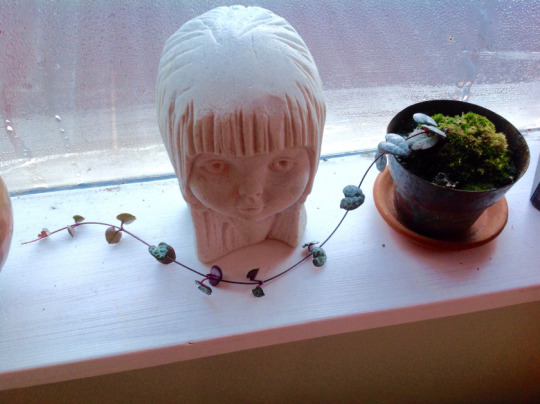
My prior experience with string of pearl plants is limited to systematically destroying each little pearl between my pudgy child fingers to the extreme delight of the popping sounds until the plant was completely decimated, and at the despair of my mother. Sorry Mum. I was certain my kiddy would be exactly the same (50% my genes, the odds are good) so to preempt this attack, I have cleverly hidden them in plain sight by placing both the thriving pearl plants into clear and mirrored vintage terrariums on the window sill. The kiddy has not even blinked at them.
Another ‘new favourite’ kiddy proof planting method is actually an old favourite way of hanging plants, not by Macrame [this time], but by the ancient and currently trending art of Kokedama. If you don’t know about Kokedama it is a form of Japanese garden art that is centuries old and tied into the practice of bonsai. The look is unique appearing both organic and natural, yet heavily manipulated and controlled at the same time.
I had a go at wrapping a Staghorn Fern. Instead of using dried sphagnum moss I used coconut fibre on the outside of my soil/leaves mix mainly to retain some moisture and nutrients. Staghorn are a parasitic plant, so unlike proper plants they are opportunistic eaters and prefer rotten leaves, Banana peels, Tea Bags and muck. Muck is not a technical term, but you get the gist. This Staghorn has been very temperamental and has had a few issues. I had it outside and it was too wet, too cold and too bright apparently that is the trifecta to make an unhappy plant. You can see this in the picture below by the ‘spotting’ on its leaves. Usually they are pretty hardy and require very little fuss. They just like the odd banana peel and they are happy. It came inside to hang over the bath out of mini’s reach and it is now enjoying a happy growth spurt with no ‘new’ blemishes appearing.
The only maintenance it needs is an occasional ‘meal’ and a drink. The best way to water a Kokedama is in a sink, or a bucket and leave it to absorb the water for a short while. Let the water drain through before hanging it again.
This is a dangerous time for child and plant see the curious little cherub in the pictures. Luckily no grief came to either that day. I probably water it once a month in the winter and you can monitor its needs by the look of vitality in its leaves during the summer months.

There is something quite alien about the look of Staghorn fern and they thrive in a somewhat damp, shady environment so they make perfect bathroom plants. They are also very versatile as they can be hung in Kokedama, a basket, a terrarium, mounted to a board, or in a traditional pot.
Next and a close favourite of mine is a ‘red heart’ arrow head plant. My version boasts a beutiful big leaf with a beautiful blush pink/taupe top with a pale green underside. Now, this one I didn’t realise until writing this post – is toxic – and I have it positioned within reach of the mini’s. I will need to move it as soon as possible because the cat likes to nibble on anything that looks like a plant. Literally, I nearly lost a flax/Reed lamp to her ‘covert’ eating habits. This plant like other arrow heads grow very compact when they are small and then start to branch out in sprawling vines when they mature. They have a beautiful soft romantic look and look amazing when they are hung high with the vines draped. Beware though, I often have to swat ‘pinchy fingers’ away when visitors are curious to check if it is real. They come in a variety of colours and the leaf shaped varies slightly between variations.

Nearing the end of this post I have to admit – Not every plant has made it – I ALSO have some epic disasters in the form of a Cactus named ‘Sugar’ who has been with me for many years – I think it is dead, I think it has been dead for years. But I am still hopeful as long as there is a bit of green on it. My other disasters are the productive food supply indoor kitchen plants – HERBS for short. They need more, or maybe less love and attention than I can provide. I tend to over water, heavily prune, have them in direct sunlight on a sill….. all sorts of wrong. However, to balance it out I do have a thriving and totally accidental pot of potatoes on a table on the deck under the watchful gaze of Buddha. So win some lose some. I am going to keep trying.
Houseplants make great pets. If I could live in a lush tropical indoor jungle I would, oh how I would!
#design#DIY#garden#gardening#history#home#indoor garden#indoor plant#indoor trees#inspiration#interior#interior design#large plants#lifestyle#living wall#plant#planting#style#toxic plants#tree#trees
0 notes